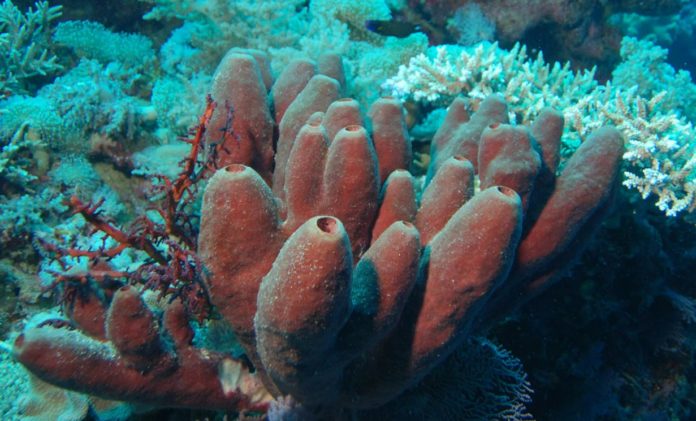The identity of our most distant animal relative on the tree of life has been a topic of debate for many years. Now it seems that scientists at Trinity College Dublin, Ireland, have come up with solid evidence that sea sponges are our animal ancestors, and not comb jellyfish, as was previously believed.
Sponges are structurally simple, lacking complex features such as the nervous system, muscles, and intestine. That means that the evolutionary line that emerged from this species was also simple and little by little it developed complex systems in other forms of life as these were separated.
Experts have been debating a lot since phylogenomic studies found evidence that our most distant animal relatives were comb jellyfish. These animals are more complex than sponges since they have a nervous system and muscles to detect and capture their prey, as well as a gut to digest them.
If this were the case, the complex features developed would have to be lost later in simple animals such as sponges or they would have to be formed twice in the course of evolutionary history, once in comb jellyfish and then autonomously in humans, sharks, flies, and other animals.
It seems unlikely that such complex traits could evolve independently twice, but evolution doesn’t always follow a straightforward path, says Anthony Redmond, a postdoctoral researcher at Trinity College School of Genetics and Microbiology. For example, birds and bats are distant relatives, but their wings have been independently developed for flight, he details.
“However, instead of comb jellies, our improved analyses point to sponges as our most distant animal relatives, restoring the traditional, simpler hypothesis of animal evolution. This means both that the animal ancestor was simple and that muscles, and the nervous and digestive systems, although further elaborated upon in many lineages, have a single origin,” the scientist told the Phys.org portal.
It is very difficult to compare genomes to assess how species are related. There are numerous methods of doing this and they all come to different conclusions. Therefore, there has been a lot of disagreement around whether sponges or comb jellyfish are our most distant relatives.
To settle the debate, the Trinity College team developed a new approach to analyzing the amino acid sequences that make up an animal’s proteins. Their approach reduced the probability of errors associated with the corresponding comparisons.
Any amino acid in a protein will only change to other amino acids with similar biochemical properties during evolution. Not taking these circumstances into account can lead to inaccuracies when reconstructing phylogenetic relationships.
“Our approach bridges the gap between two disagreeing methodologies, and provides strong evidence that sponges, and not comb jellies, are our most distant animal relatives,” confirms another researcher, professor of genetics at the School of Genetics and Microbiology from Trinity College and lead author of the article, Aoife McLysaght.
Therefore, our last common animal ancestor was morphologically simple, and repeated evolution and/or loss of complex features such as a nervous system is less likely than if comb jellyfish were our most distant animal relatives, the scientist concludes.
“This is fascinating in its own regard, but it also represents an important step forward in phylogenomic research,” explains McLysaght. Other researchers had come to different conclusions about our most distant animal relative, and that was the case even when using the same data, but different methods, he adds.
This new approach should be useful for similar studies in which scientists try to figure out how certain species are related to each other. This information is crucial for understanding evolution and can have important consequences in other corresponding fields, such as biodiversity and conservation sciences, the specialist concludes.
The results of the study were published in the international journal Nature Communications.
